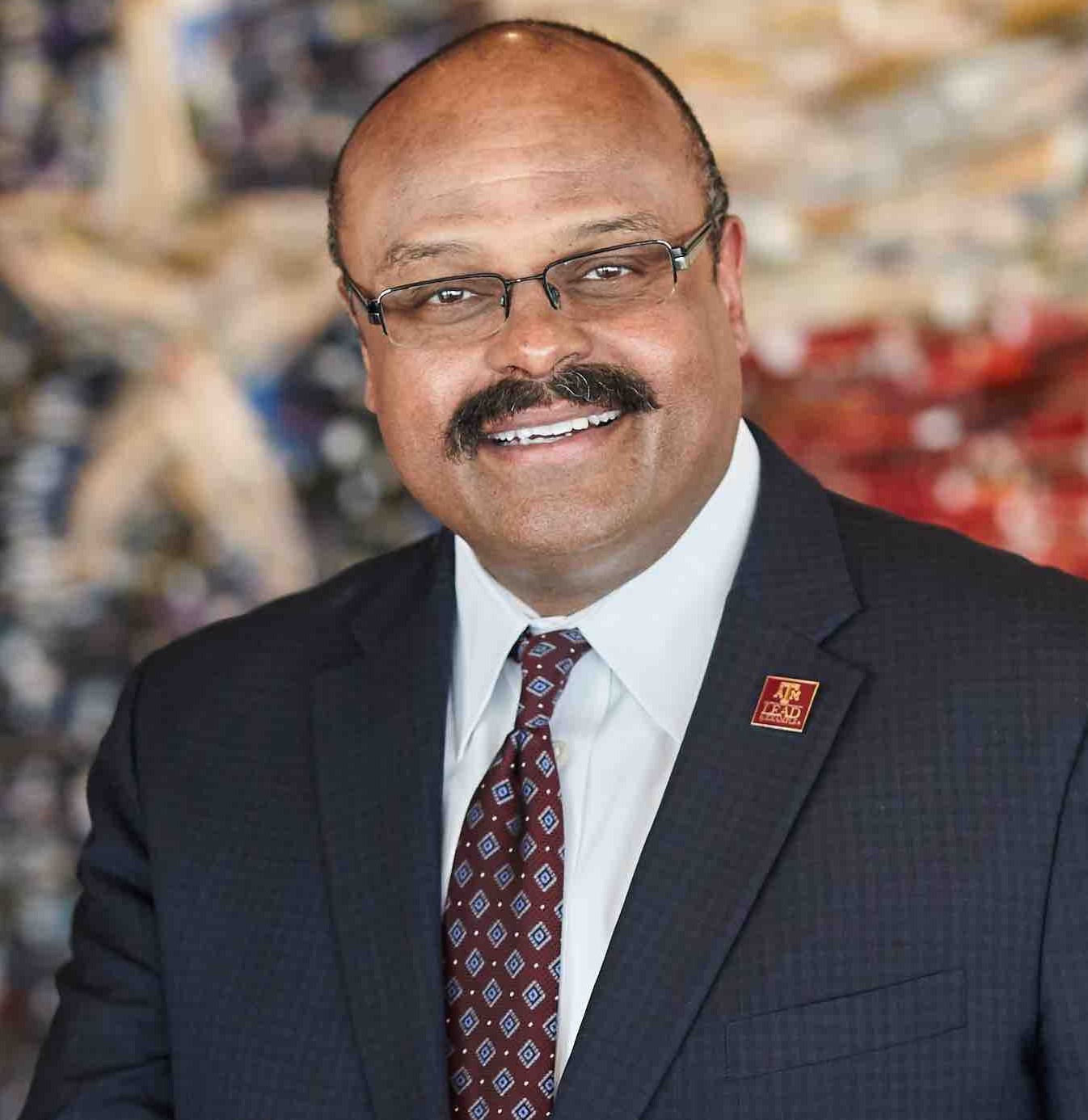Diversity, equity and inclusion: Changing the dynamic in academia
November 24, 2020
|
Mays Business School
Originally posted on universitybusiness.com

People Images/Getty Images
Dr. Eli Jones, the dean at the Texas A&M Mays Business School, and his colleagues at The PhD Project are leading the charge to get more people of color in significant academic roles.
The list of strategic initiatives at Texas A&M’s Mays Business School include many of the goals set by other institutions: high-impact research, impactful teaching and learning and transformational leadership.
But at the very top, strongly and purposefully, is this: Diversity, Inclusion and Engagement.
“We made that one the first priority,” says Jones, Dean of Mays Business School. “That sent a signal to the organization that this is a really important issue for us. I’m glad that we did. To me, this priority is about setting our culture and climate more than anything else.”
The culture Jones would like to see at his school, and others across the country, is one of belonging – a place for all students to feel welcome. Texas A&M is still a primarily White-student-serving institution. In fact, Black students comprise less than 4% of the population across its campuses, including College Station. The divide in numbers at Mays Business School is just as pronounced: Of its 6,300 students, just over 4,000 are White and 147 are Black. If changing the culture starts with belonging, then closing that gap is a must.
It is not only student enrollment that matters. Leadership positions at colleges and universities need to be more inclusive as well. Not counting Historically Black Colleges and Universities (HBCUs), Jones is one of only a handful of African-American senior administrators in the country.
“Think about that for a minute,” Jones says with a pause. “There are more than 800 AACSB accredited business schools, and only a handful of African American business deans at non-HBCUs. Obviously, we have a long way to go.”
Despite that seeming futility, there is hope, and Jones sees change coming. It is starting in the classrooms and it’s weaving its way through MBA and master’s programs and into Ph.D. programs. A number of universities this year have placed leaders of color in president positions. Still, it is a long road to climb.
The opportunity costs are high. To get there requires sacrifice and countless academic steps, sometimes leaving a high salary at a well-known company to become a graduate student. It could take 15-20 years on a tenure track to build the reputation needed to be considered for a senior leadership position in academia.
However, the payoff long-term can be worth it. And it is Jones and his colleagues who are trying to convince more to pursue those tracks. He is part of a non-profit initiative called The PhD Project that aims to diversify business college leadership … and thus change the makeup of leaders in the corporate world by increasing the number of people of color in the classrooms and in academic leadership.
“We’re talking to people in corporations about considering a career change to become a professor, and we’re helping them navigate and matriculate through PhD programs across the country,” Jones says. “These are critical career decisions.”
Not everyone needs to rise to the level of dean to make an impact, Jones says. He notes the continual increase in people of color in important positions in higher education – professor, center director, department head, and associate dean. Their status and leadership have provided reasons for young, under-represented minority students to want to attend classes, enroll in programs and further other academic pursuits.
In fact, The PhD Project notes that since its inception in 1994, the numbers of minorities who have completed Ph.D.s has risen from 294 to more than 1,500. The group is currently guiding more than 300 doctoral students and over 1,300 business professors of color. Their success at these institutions is staggering: 90% of those impacted complete the Ph.D. program, crushing the 70% median rate. Their retention rate is even better – 97%, compared with U.S. national average at just over 60%.
“More people of color are making the sacrifices in the short term so that they can make a long-term impact by becoming professors and helping students of color at the undergraduate and graduate levels.” – Dr. Eli Jones, dean at Texas A&M’s Mays Business School
Jones points out that change is happening, but it is slower than desired. The pipeline in the past wasn’t there. An infusion of new minority professors and senior leaders, however, is beginning to make a real difference.
“If you happen to be in a classroom, and you see someone who looks like you, sounds like you and has a similar cultural experience, that could make a great impact as a role-model,” Jones says. “More people of color are making the sacrifices in the short term so that they can make a long-term impact by becoming professors and helping students of color at the undergraduate and graduate levels.”
Speaking of impact, there may not have been anything more significant to the movement around diversity and inclusion than two major events in 2020: the COVID-19 pandemic and the George Floyd murder. Jones calls it a “1-2 punch” that created a combination of fear, anger and frustration that led to both a heightened awareness and extreme discomfort over the Minneapolis Police Department’s mishandling of the Floyd arrest – the feeling that “this is not right.”
“People around the world had a chance to see on video how grossly wrong that was,” Jones says. “It was very visible to them and they reacted. We’ve been given lip service about diversity and inclusion for many, many years. But that tragedy and others made it real.”
It not only sparked mass protests involving all races and genders but also ignited conversations among CEOs at businesses, who leaned on Jones and other academic leaders when drafting their statements on diversity, equity and inclusion.
“I heard from senior leaders at companies, statements such as, ‘I’m not going to just make a blanket statement that says yes, we believe in diversity, equity and inclusion,’ ” Jones says “I want to put something out that is more meaningful. Could you sit and talk to me so I can better understand the underlying issues? So, I think it’s more than lip service now. There’s a level of sensitivity about it.”
The Southeastern Conference (SEC) is best known as the home of major college football – Alabama and Nick Saban, LSU and Death Valley, and of course Texas A&M and its 12th Man. But the SEC recently proved it is more than just gamesmanship on Saturday afternoons.
When the George Floyd murder occurred, the deans of the business schools in the SEC put out a collective statement together – 14 strong – to back diversity, equity and inclusion. And not with a nod to the moment but a lean to the future.
“We are soundly committed to fostering a sense of community that is welcoming to and respectful of all individuals — students, faculty and staff,” the statement said. “Likewise, it is our duty to prepare our future business leaders for careers in an international and increasingly diverse workforce. We strive for inclusion, equity and diversity where all voices, viewpoints and backgrounds are valued and supported.”
It was a special moment for Jones. He is the only African-American dean in that contingent and the one who spurred the call to action.
“We have been talking about doing something together, and what a great opportunity to show how cohesive we are on an issue that truly matters.”
Moments like the Floyd murder – and the resulting response – have opened a lot of eyes and a lot of minds.
“I’m now sensing that people really want to listen,” Jones said. “I’ve had lots of non-minority colleagues say, ‘we’ve never really talked about this, Eli. Maybe we should grab dinner and talk through some of what we’re seeing nationally.”
On a more macro level, the work of The PhD Project continues. There is an annual conference for potential doctoral students interested in a number of disciplines, including accounting, finance, management, marketing and entrepreneurship. The cadre of business school leaders hope that those discussions will spark interest and lead to others follow the same paths that Jones and others have taken.
Jones believes that sooner or later, it will happen … where incidents like George Floyd no longer occur, where the pool of students is forever diverse and where belonging is just happenstance.
“I think we’re positioned now to really make some substantive changes, that will actually help in the future,” he says. “I’m thinking about my grandkids. I want my grandkids to have a better future where they’re not having to struggle through these issues.”
The PhD Project resources
- There are a number of great resources on The PhD Project’s website, including a chance to connect with 1,500-plus minority faculty and doctoral students, plus thousands of minority professionals.
- It also features a frequently asked questions page with details about the program, the benefits of pursuing education and preparing for a doctoral program.
- There are also lists of doctoral granting institutions, pre-doctoral programs, job sites and education funding for those interested.





